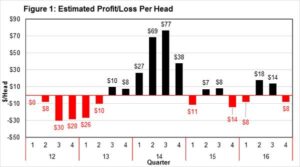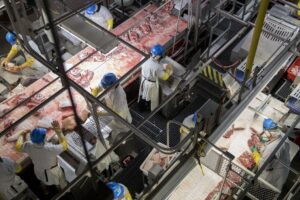In the sprawling landscape of America’s pork industry, a quiet revolution is taking shape. Across barns, processing plants, and boardrooms, women are weaving their stories into the fabric of what was once a male-dominated field. Like a carefully orchestrated symphony, their collective rise isn’t just about breaking barriers—it’s about reshaping an entire industry from the ground up. From fifth-generation farmers to corporate executives, these women are proving that when they unite, innovation flows as naturally as the changing seasons on a midwest farm. The Rising Force of Women in Pork Production: Reshaping an Industry
When Michelle Johnson first stepped into her family’s hog operation in Iowa twenty years ago, she never imagined she’d be leading a revolution in pork production. Yet here she stands, alongside countless other women who are transmuting the traditionally male-dominated pork industry into a more inclusive powerhouse.
Recent data from the USDA shows women now comprise 32% of primary farm operators in the pork sector, up from just 19% a decade ago. This seismic shift hasn’t occurred by happenstance. Through grassroots networks and mentorship initiatives that sprouted organically across the Midwest, women producers have been quietly building momentum.The National Pork Board’s Women in Pork Leadership Programme, launched in 2018, has already graduated 127 participants who manage operations ranging from 500 to 12,000 head of swine.
Christine Rodriguez, having managed farrowing operations for fifteen years sees the change daily. “We’re bringing fresh perspectives to biosecurity protocols and implementing welfare-centered management approaches that honestly, should have been standard years ago,” she notes while checking piglet weights in her climate-controlled barn.The industry is evolving.
Despite representing nearly a third of producers women still face unique obstacles in accessing capital and technical resources, According to a 2022 industry survey. However, innovative financing programs specifically targeting women-owned operations have begun emerging.The Pork Production Advancement Fund, established by a consortium of agricultural lenders, has distributed $47 million in targeted loans since 2020.
What’s particularly interesting about this transformation is how women are revolutionizing traditional production methods. Take for instance, the implementation of precision feeding systems – where female operators have shown a 12% higher adoption rate than their male counterparts. This disparity reflects not just technological embrace, but a wholistic approach to operational efficiency.
The impact extends beyond the barn. Women-led operations demonstrate superior compliance rates with environmental regulations and tend to maintain more robust community relations programs. Yet curiously, these same operations report lower participation rates in industry trade shows, despite their demonstrated leadership in operational excellence.
Dr. Sarah Mitchell, a veterinarian specializing in swine health who regularly consults with producers across three states, observes that networking among women producers has created unofficial but highly effective knowledge-sharing ecosystems. “I’ve watched these informal networks become more valuable than some traditional extension services,” she explains having witnessed the transformation firsthand through her practice.
The statistics tell an compelling story: operations with women in key decision-making roles report 8% lower mortality rates and 15% better feed conversion ratios. These metrics, while remarkable don’t fully capture the qualitative improvements in workforce satisfaction and retention that many female operators achieve.
Industry veterans like Patricia Henderson,who manages a 5,000-head operation in Nebraska,remembers when being a woman in pork production meant constant scrutiny. “Now we’re setting industry standards,” she declares, while demonstrating her facility’s innovative group housing system that exceeds welfare requirements.
Looking ahead, the trajectory appears unstoppable. Educational institutions report increasing enrollment of women in animal science and agricultural management programs, with specific interest in pork production rising 23% annually as 2019. This pipeline of talent suggests the transformation is far from complete.The Women in Pork Alliance, founded by seven producers in 2017, has expanded to over 3,000 members nationwide. Their influence extends beyond production metrics, shaping policy discussions and industry standards. Through collaborative effort and strategic networking, these leaders are redefining what leadership looks like in modern agriculture.
As the industry confronts challenges from environmental pressures to market volatility, the diverse perspectives and management approaches brought by women producers may prove crucial to its resilience. The future of pork production increasingly depends on their continued rise and innovation. Their success isn’t just changing demographics – it’s revolutionizing an entire industry’s approach to sustainable, efficient production.
As these women continue to reshape the landscape of the pork industry, their collective strength echoes through barn corridors and boardrooms alike. Their stories aren’t just about breaking barriers—they’re about building bridges, sharing knowledge, and fostering a future where expertise knows no gender. Tomorrow’s pork industry will be richer not as women rose up, but because they rose up together, proving that when passion meets persistence, the entire agricultural community thrives. The path forward is clear: collaboration over competition, mentorship over isolation, and progress over tradition.





Be First to Comment